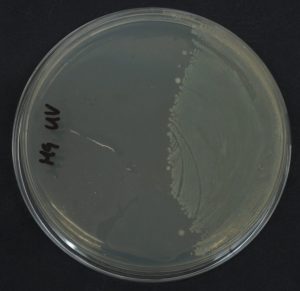Radiation: Ultraviolet
Ionizing electromagnetic radiation is a very effective form of physical sterilization but its use is limited because special facilities are needed for the radioactive decay. During the practicals the material will be used that has been acquired from companies that supply equipment that is sterilized through γ radiation, which is very penetrating and useful radiation to sterilize thermolabile material such as plastic.
In the practicals laboratory ultraviolet light (UV) will be used that has a biocidal effect, which is due to the formation of thymine dimers in the DNA. This radiation has a very low penetration capacity, which means that its use is limited to treating surfaces or to sterilize the air in “cleanrooms” such as operating theatres or facilities such as cell culture units.
Necessary material:
-
- Mixed culture
- Nutrient agar plate
- Aluminum foil
- Germicidal UV lamps
To carry out this practical first of all a mixed culture in a nutrient agar plate is inoculated by means of the inoculation loop. Then, lift up the lid and cover half of it with aluminum foil (make sure it does not touch the surface of the growth medium). Put the open plate under the UV lamp that is on for 5 minutes. After that, remove the aluminum foil, put the lid back on the plate and put it in the incubator at a temperature of 37ºC. After 24 hours of incubation the microbial development is observed in the part that is protected from the radiation, unlike the exposed part where there is a lack of growth.
Result
After incubation at 37ºC for at least 12 hours, colonies are seen to have grown on the half of the plate that has been protected from the bacteria of the UV light with aluminum foil.

